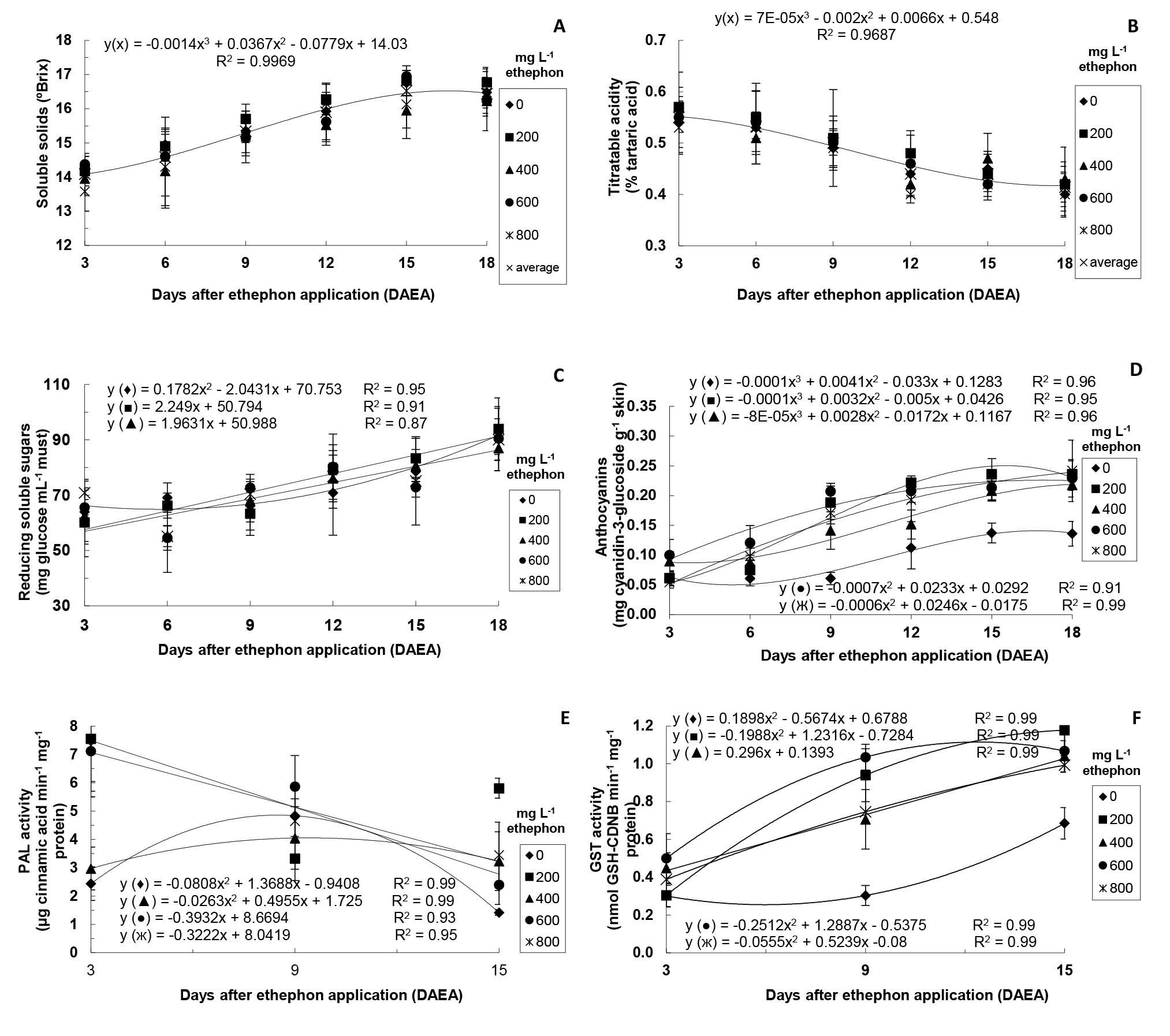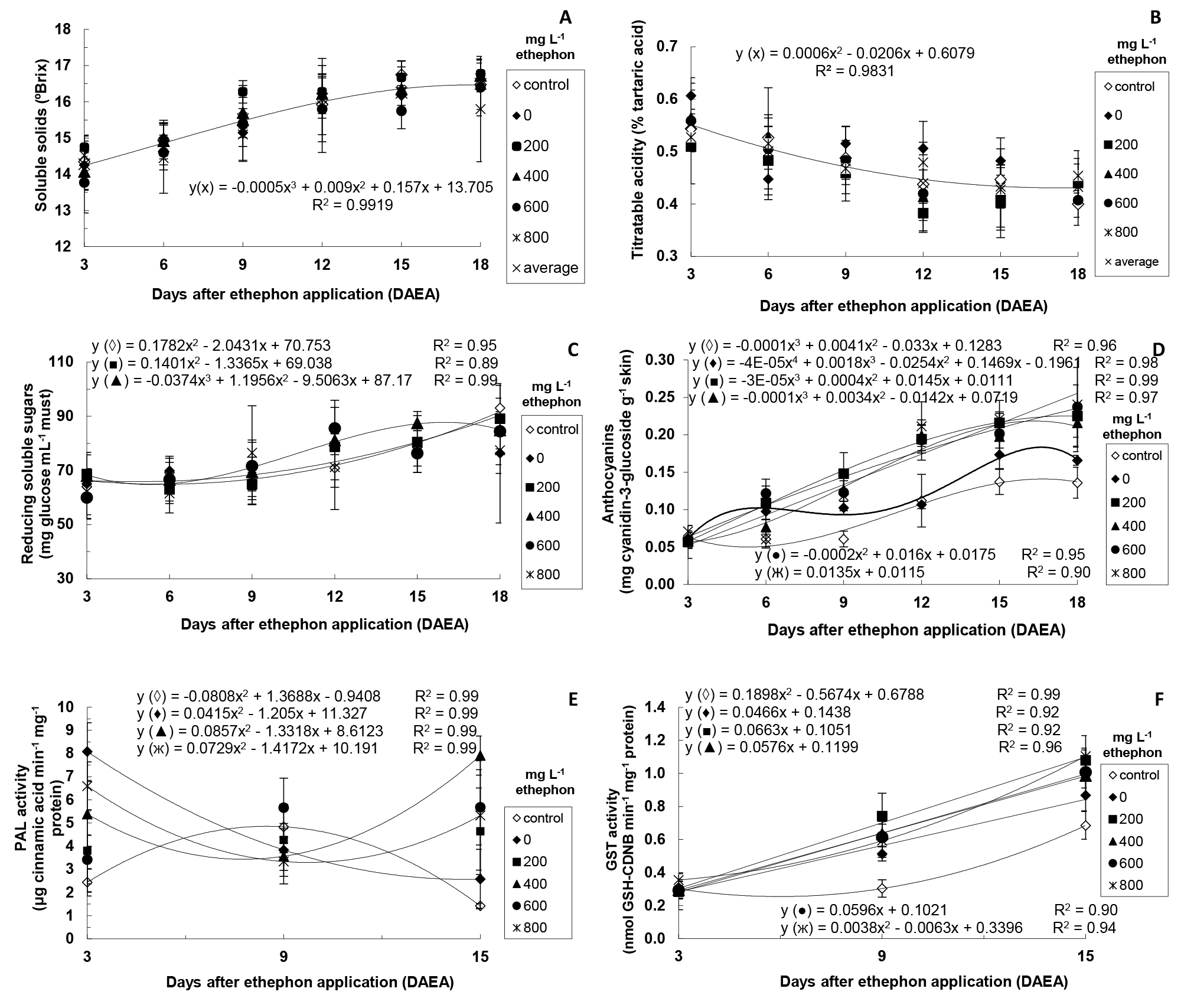ABSTRACT
‘Rubi’ table grape has wide acceptance of the consumer market due to its affordable price and attractive color as a function of the accumulation of anthocyanins. However, environmental conditions do not always favor the suitable accumulation of these pigments, resulting in commercial devaluation and nutritional depreciation of fruits. Thus, the present study aimed to investigate the effect of application of different ethephon concentrations, associated or not with CaCl2 application, on the skin color and quality of ‘Rubi’ grape berries. First, specific traits of berries treated with 0, 200, 400, 600, 800 mg L-1 ethephon associated with 1.5% CaCl2 solution were evaluated and pH, titratable acidity (TA), soluble solids (SS), berry firmness, total and reducing soluble sugars, and anthocyanin and flavonol levels were analyzed. This first stage of evaluation revealed no changes in total sugar levels, firmness, SS, TA, SS/TA ratio, and flavonol levels, while changes were detected regarding reducing sugar and anthocyanin levels. Thus, in the second stage, the following variables were evaluated: SS, TA, reducing sugar levels, anthocyanin levels, phenylalanine ammonia lyase (PAL) and glutathione S-transferase (GST) activity of ‘Rubi’ grape berries treated with 0, 200, 400, 600, 800 mg L-1 ethephon, associated or not with 1.5% CaCl2 solution. The results of the present study indicate that ethephon associated with CaCl2 can contribute to improve the post-harvest quality of ‘Rubi’ grape, since this association increased the accumulation of anthocyanins due to the higher activity of PAL and GST, related to biosynthesis and storage of antocyanins, respectively, and increased the levels of reducing sugars (at low ethephon concentrations), not changing other quality aspects. Therefore, a single ethephon application from 200 mg L-1 associated with the application of 1.5% CaCl2 at the final ripening stage, when bunches present from 30 to 50% skin color coverage, was sufficient to produce satisfactory results regarding skin color improvement of ‘Rubi’ grape berries.
Index terms
Vitis vinifera L.; ethylene; calcium; anthocyanins; flavonols; sugars; phenylalanine ammonia lyase; glutathione S-transferase

 Thumbnail
Thumbnail
 Thumbnail
Thumbnail

